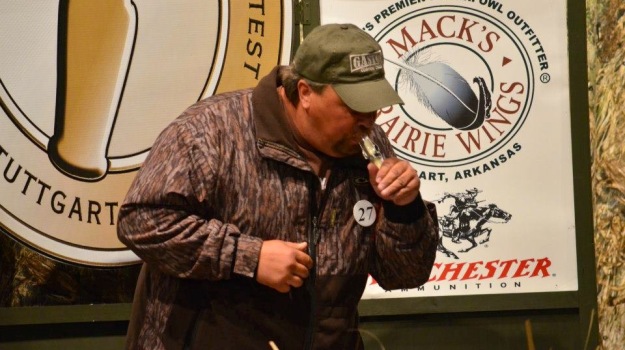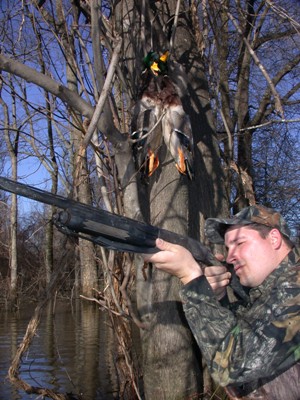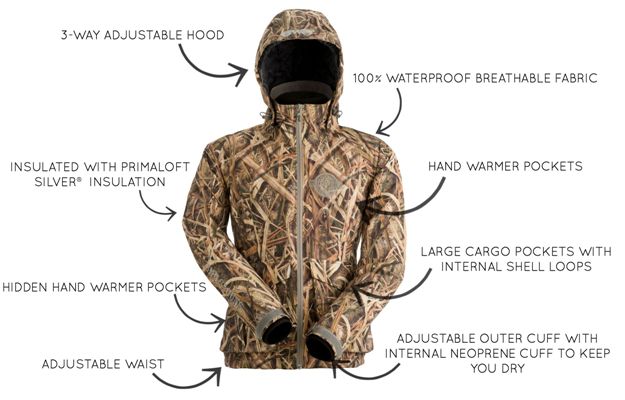
Editor’s Note: Mike Still, of Judsonia, Arkansas, has been hunting ducks for over 40 years and has been a member of the Mossy Oak Pro Staff for 7 years. Somewhat surprisingly we learned his favorite pattern is the original Bottomland camo for hunting waterfowl. “The reason I like Bottomland is because I primarily hunt flooded timber, and Bottomland looks more like a tree trunk, especially when I’m standing in the shadow of a tree, than a real tree trunk looks,” Still explains. The good news is the forecast for duck season this year is that there will be plenty of ducks coming down the flyways.
Most duck hunters know that during the early season ducks like to land in bigger holes in the timber than they do later in the season. They can see better in those bigger holes, and as they come in to the decoys, they’ve got more room to light. There’s a camp ground I hunt on the side of a big creek, and this camp ground floods in the early season. Then the ducks have about 400 yards of open water that acts as a runway for the ducks to come down before they land on the water. This camp ground has a main road that runs right along the side of a creek, and when the creek floods, there’ll be a foot or two of water over the camp ground. When the ducks are flying over, they can’t tell how deep the water is, and duck hunters will drive by this place every day going to those good spots back up in the timber. I think the fact that when I can drive down a gravel road, step out into a foot or two of water, walk on a gravel parking lot, not have to worry about stepping over stumps or into beaver runs and get to a tree I can stand beside and shoot ducks is great. This camp ground floods at the beginning of every duck season, and none of the other hunters think about hunting in the flooded camp ground.

To me, taking ducks on public lands is just like harvesting deer on public lands. There are many big bucks taken every year from places where no one else ever thinks of hunting. What’s really fun for me is when I see other hunters driving by the camp ground, and they’ll see me by a tree with my decoys out and start laughing. They think I’m a stupid newbie who really doesn’t know how to find ducks, and that’s exactly what I want them to think. I just wave and smile to them as they go by, and often, by the time the roar of their engines fade in the distance, I’ll be shooting ducks. Another tactic that we use to protect our crazy spots is that when we have a big flight of ducks come in, we’ll only shoot one or two ducks out of that flight. We don’t shoot 6 to 12 times to take all the ducks out of the flight, because if we do, we’ll draw a lot of attention from other duck hunters. We don’t want to have a lot of volleys at a big flight of ducks, but when we shoot, we do want ducks to tumble. Most of our hidden spots are so good and so obvious that we don’t want to give them away by too much shooting, just like a good deer hunter won’t jump up, holler, scream and carry on with excitement when he takes a big, older-age-class buck. More than likely he’ll sneak out of the woods as quietly as possible, so no one else will know where he’s hunting. Many times when you take a mature buck, more than likely another big buck will move into that same area. It’s the same way with ducks.
To learn more about hunting, check out John E. Phillips’ new eBook and print book, “Bowhunting Deer: Mossy Oak Pros Know Bucks and Bows.” You also can download a free Kindle app that enables you to read the book on your iPad, computer or Smartphone.
Day 1: Mike Still Gives Secrets for Taking Public Land Ducks
Tomorrow: How to Hunt Sneaky Holes for Ducks



























